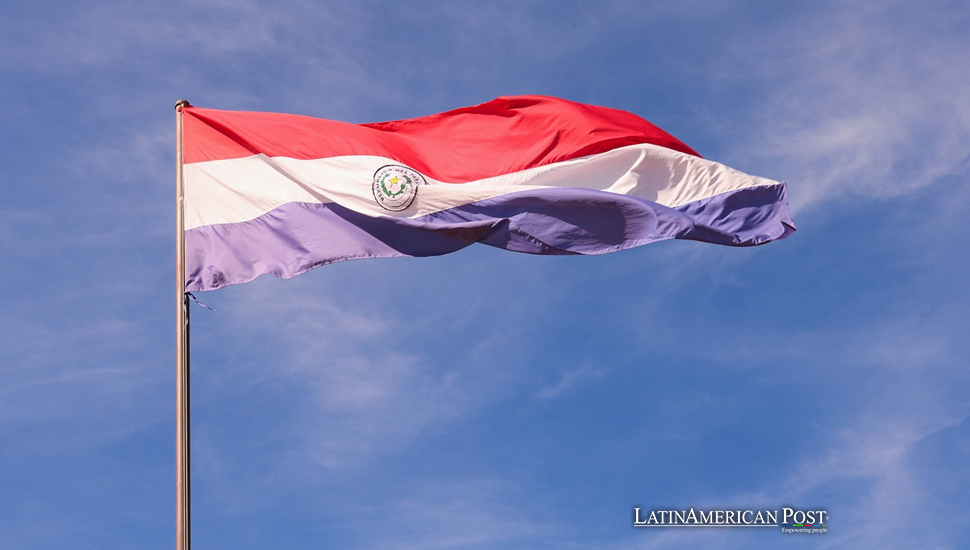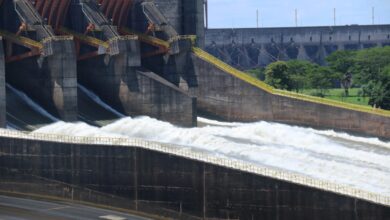Paraguay’s Bold Bid to Become a South American Tech Power

Paraguay, a small country compared to its giant neighbors, is becoming South America’s hotspot for technology. It has plenty of renewable energy. Economic changes are happening here. Young people who know technology drive growth. Paraguay is getting ready to become a center for AI and new ideas.
Clean Energy: Paraguay’s Secret Weapon
Paraguay, a country surrounded by land and comparable in size to California, is quietly becoming important in the global tech scene because of its strong clean energy sector. This nation stands as the world’s biggest net seller of clean energy. Almost all of its electricity, 99.9%, originates from renewable sources. At the heart of this success are two colossal hydroelectric dams: Itaipú, shared with Brazil, and Yacyretá, shared with Argentina.
“This energy surplus is our greatest advantage,” President Santiago Peña told Newsweek during a recent interview in New York City. “We have the clean, cheap electricity needed to power the AI revolution.”
As AI technology demands ever-greater processing power, tech giants like Alphabet, Meta, Nvidia, and OpenAI have taken notice. Paraguay’s low-cost energy is increasingly attracting their investment. “Energy-intensive industries, especially in AI, are seeking sustainable solutions,” Peña explained. “Paraguay is uniquely positioned to deliver.”
The dams create a lot of energy, much more than Paraguay needs. The country sends most of this surplus to Brazil and Argentina. Now, Paraguay wants to use this extra energy to invite high-tech companies. These companies include those that work with semiconductors and AI data processing. Paraguay works with Taiwan to explore microchip production. This project aims to turn Paraguay into a tech center in Latin America.
Economic Reforms Lay the Foundation
Paraguay’s growing popularity as a tech hub is not solely due to the country’s economic rules; the changes in its institutions are also attracting many investors from abroad.
Inflation has remained steady at around 4% annually. Paraguay’s flat 10% value-added tax (VAT), personal income, and corporate earnings tax have earned praise from global corporate tax specialists. Paraguay is one of the few places where simplicity meets opportunity. Moody’s recently upgraded Paraguay’s credit rating to investment grade, recognizing the country’s strong economic growth and resilience in the face of external challenges.
President Peña talked about how important these changes are: “We’ve.” He spoke during his interview with Newsweek. We built a stable and predictable place for wearers,” he said. Paraguay welcomes businesses and does everything possible to ensure their success here.”
Strong legal protections for foreign investments exist in Paraguay. The country also has many young workers—half of the population is younger than 26 years old. All the right conditions are in place for a successful tech environment.
The Role of Branding: Closing the Perception Gap
Despite its advantages, Paraguay still faces a significant challenge: global recognition. While there is excitement in Silicon Valley and East Asia, the country remains relatively unknown to much of the world. “There’s a gap between reality and perception, and we need to close that gap,” President Peña admitted. “We need to do more marketing.”
Peña compared Qatar during the interview, stating, “We are the small Qatar of clean, renewable energy. Our entire economy runs on this.” Experts think that this kind of branding and targeted marketing could greatly improve Paraguay’s place in the world. Milan summed it up clearly꞉ “President Peña is a very energetic leader and a really great spokesperson, but he cannot do this alone. Paraguay needs ongoing efforts and very serious investments for nation branding.”
A Young Workforce and the Road Ahead
One of Paraguay’s most compelling assets is its youthful, digital-native population. The average age in the country is just 26, making it one of the youngest workforces in the region. “Paraguay’s young people are its greatest strength,” Peña said. “They are eager, tech-savvy, and ready to lead the country into the future.”
This demographic advantage aligns well with the demands of the tech industry, which increasingly relies on a workforce that is both highly skilled and adaptable to new technologies like AI and machine learning.
However, challenges still exist. Paraguay’s education system must evolve to meet industry demands, especially in STEM (science, technology, engineering, and mathematics). “We are working on partnerships to solve this,” Peña mentioned, noting collaboration with Taiwan and other countries to create specialized training programs.
Furthermore, developing infrastructure—such as improved broadband access and better logistics networks—will be very important for Paraguay. These improvements are crucial to keeping the country competitive in the tech scene. Paraguay has the basic materials for success. But this is a marathon, not a sprint. Continued investment in education, infrastructure, and marketing is vital to maximizing its potential.
From Overlooked to Essential
Paraguay’s emergence as a tech powerhouse represents a remarkable transformation for a nation its neighbors have long overshadowed. With abundant economic energy, sound financial policies, and a young workforce, the country is poised to take its place globally.
“We are no longer just the landlocked country between Brazil and Argentina,” Peña said. “We are a nation with big ambitions and the resources to achieve them.”
Also read: Hurricanes’ Long-Term Mortality in Latin America and the Caribbean
The coming years will determine whether Paraguay can fully capitalize on its advantages. However, one thing is clear: this overlooked nation is ready to enter the spotlight. As Peña succinctly put it, “The world is watching, and we are ready to deliver.”





